Energy Matters
n Bright future: Solar PV hits the roof in Scotland.

n Grid links: Updating the infrastructure supporting offshore wind generation.
n Going green: Transforming a former coal-fired power station.
n Energy crisis: What can farmers do to cut their costs?
ISSUE 25 | WInTEr 2022/23
By Mike Reid Head of Energy
s
Facing up to the energy challenge
Welcome to our 25th Edition of Energy Matters. Energy is changing for years we knew it as a means of powering production, warming homes and moving about now it’s also a geopolitical bargaining chip or, worse, an economic weapon for undermining economies, affecting entire industries as well as individuals, with negative effects on living standards We can’t stand by and wait to see what might happen It has taken recent global events for people to realise that energy security should have been far higher on the agenda and not just from renewable sources Blessed with ideal conditions, the UK is a global leader in on and offshore wind, with Scotland particularly well located Technical advances are also allowing us to benefit more from solar power, the cheapest energy source While 30% of our energy comes from renewable sources, roughly 40% still comes from gas much of it produced in the UK, the rest imported, but the Government’s hugely ambitious net zero target means we need to end our reliance on fossil fuels
Businesses, households and Government need to invest, primarily in:
• Low carbon technologies, from wind and solar production to home heating systems;


• Energy efficiency much overlooked but essential to make the most from what we have;
• Storage innovation to address the intermittency of renewable power at local and grid levels; and
• Better infrastructure to ensure the grid serves modern, decentralised generation and distribution
In this issue we explore some of these challenges and look at how we’re working with innovators seeking to address them We discuss the need for better infrastructure and energy storage and how that’s playing out offshore, and also look at how solar and battery storage projects are progressing
We also report on better home heating, how a coal fired power station is being transformed into a wind power hub, and electric vehicles at home and on the road
It’s important to remember that huge strides in the energy transition have been made by the private sector inventors, investors, developers and landowners and that is set to continue
But whatever it takes, as recent months have shown, the need is for action to bring about an energy revolution
Mike Reid
16Built for the future: A new house designed with energy saving in mind
7Shine on: Concerns over energy supply, and improvements in technology, are driving demand for solar power in Scotland.


20
Pumped up: Glasgow academics have made heat pump technology even more efficient.

Pag e 2 | Energy Matters | Winter 2022/23 | galbraithgroup.com
WELCOME
CONTENTS
Energy M at te r s i s p ro d u ce d by Allerton Communications, Marlborough, Wiltshire, a n d d e sig n e d by G e o r g e G ray M e d i a & D e s i g n, Saint A n d e ux , Fra n ce
©
C K D G a l b ra ith L L P
Image: Sebastian Ganso pixabay com
True grid: Plans to reshape the infrastructure supporting offshore wind generation and transmission are well under way
4Power game: Storage and updating infrastructure are critical to making renewable energy sustainable
19
Green gas: Renewable hydrogen should play a significant role in powering our future, but there are still many obstacles to overcome
9
Transformation: A former coal fired power station is emerging as a key renewable energy site and focus of planned economic development and job creation

10
Home charge: “We now spend more on fuel for the lawnmower than we do for the car ”
11
Hot locations: Solar PV developers are seeking land beside roads for green energy, storage and vehicle charging
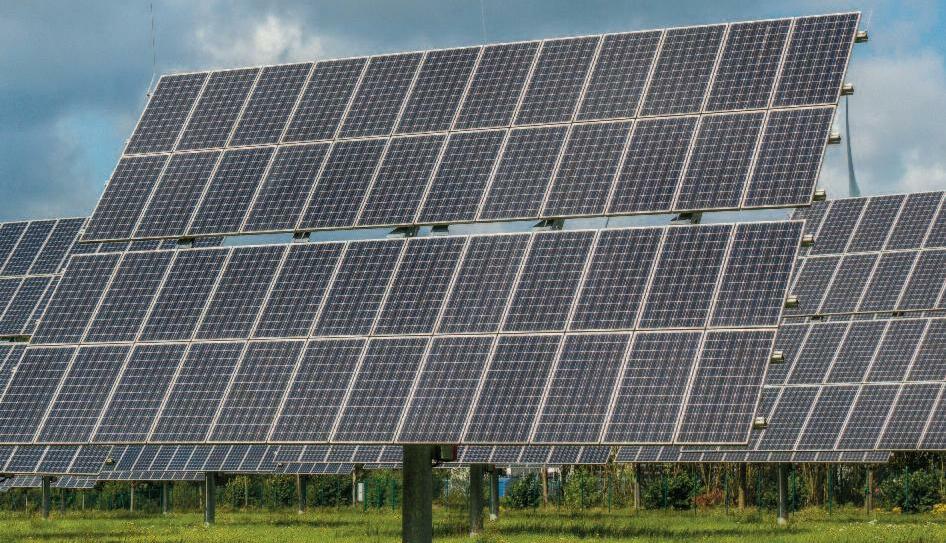
8Tough task: Energy performance data highlight the challenges of making homes energy efficient
6Energy store: Battery systems have a vital role in managing green energy supplies and responding to electricity demand
Be prepared... when a utility provider seeks to undertake works on or near your property
Virtuous cycle: Cycle paths bring economic as well as environmental and leisure benefits.

Tough call: Mobile operators are seeking to strengthen their hand in negotiating telecommunication leases by limiting landlords’ compensation rights
Thought for food: The energy crisis is nowhere more significant than in agriculture, especially food production. So what can farmers do?
Current renewable energy subsidies
galbraithgroup.com | Energy Matters | Winter 2022/23 | Pag e 3
18
15
14
23
12
21
Energy storage and better grid connections are key to a renewa

Storage and updating infrastructure are critical to the sustainability of renewable energy Mike Reid reports
Renewable energy generation capacity continues to rise in Scotland as demand increases for new onshore wind farms and solar developments.
However, producing renewable power is only one stage of the energy journey
It is critical that Scotland upgrades its infrastructure to be capable of transporting renewable power to consumers and puts in place the apparatus to store energy in order to make renewables a sustainable, long term energy resource
renewable energy is intermittent by its very nature, relying on the sun, wind or rain as its power source
While the country is going through an energy crisis with high electricity and other power prices, it is frustrating that when conditions are optimal for producing renewable power, the electricity transmission infrastructure lacks the capacity to cope with the demand, so renewable developments are paid to not generate power This is a waste of money and renewable energy
According to the renewable Energy Foundation, onshore wind farms in Scotland were paid £243 million in 2020 for not producing energy, amounting to 3,460GWh of power This reduced in 2021 to £107 million for 1,783GWh
The lower numbers last year are not much of an improvement, as the average capacity factor of Scottish onshore wind farms (average power output divided by maximum capability) fell from 26 7% in 2020 to 22 1% in 2021 the second lowest capacity factor in 20 years
The location of some wind farms means they are more constrained than others because of grid capacity In 2020 some discarded almost 50% of their total generation capacity
The constraints problem will persist until the
Pa g e 4 | Energy Matters | Winter 2022/23 | g a l b ra i t h g ro u p co m
The location of some wind farms means they are more constrained than others because of grid capacity. In 2020 some discarded almost 50% of their total generation capacity
“
ble future
inter connection improves between Scotland and the centre of demand in England It is not clear whether the required level of infrastructure is feasible or economically viable

Even if the network could take the power, we still need to develop effective storage capability in periods of peak supply so that it can be used when demand increases
Energy storage technology is advancing and various options are being developed, including pumped hydro storage, compressed air energy, flywheels, batteries, conversion to hydrogen, thermal energy and electromagnetic storage to name a few
reliable energy storage will develop in time and, while companies are being paid not to generate, the sooner the better for those paying high energy prices
mike reid@galbraithgroup com 07909 978642

g a l b ra i t h g ro u p . co m | Energy Matters | Winter 2022/23 | Pa g e 5
Energy market warms to idea of battery storage projects
Battery storage will play a huge role in the replacement of fossil fuels with renewable energy technologies Philippa Orr reports
Wind and solar as renewable energy technologies produce much of the electricity we need to power our homes and offices and are key to speeding up the replacement of fossil fuels.
Battery storage systems will also play a vital role in helping with the management of green energy supplies and responding to electricity demand
These systems allow renewable energy to be stored and then released when there is a need for the energy A battery is charged by electricity generated from a renewable energy technology
Energy is then released from the system during times of peak demand, helping to limit cost by replacing power from the grid
Battery storage needs to use low cost technologies that have long lives, are safe and can store enough energy to match demand
Lithium ion batteries are the most economically viable and are used in laptops and smartphones, but there are environmental and human costs associated with lithium extraction so it’s worth noting other technologies for battery storage currently being developed, including:
Compressed air energy storage: Surplus power is used to compress air which is then stored and the compressed air is released through an air turbine to generate electricity
Mechanical gravity energy storage: Excess energy from the grid is used to raise a mass to generate gravitational potential energy, which is then dropped to convert potential energy into electricity through an electric generator
Flow battery: This is a rechargeable fuel cell in which energy is provided by two chemical components dissolved in liquids that are pumped through a system on each side of a membrane
In the past six years the UK market’s appetite for battery storage systems has increased, particularly in 2021 with the annual deployment growing by 70% compared to 2020 In addition, the pipeline of future projects increased by 11GW to 27GW by the end of 2021
By 2021 the total installed capacity was nearly 1 7GW across 127 sites (Energy Storage News, March 2022) Most of projects deployed in 2021 were submitted to planning between 2017 and 2019, which suggests that there is still a large number of projects submitted during this period that are still pending construction this underlines the potential that Galbraith has been seeing, and future growth in the near future
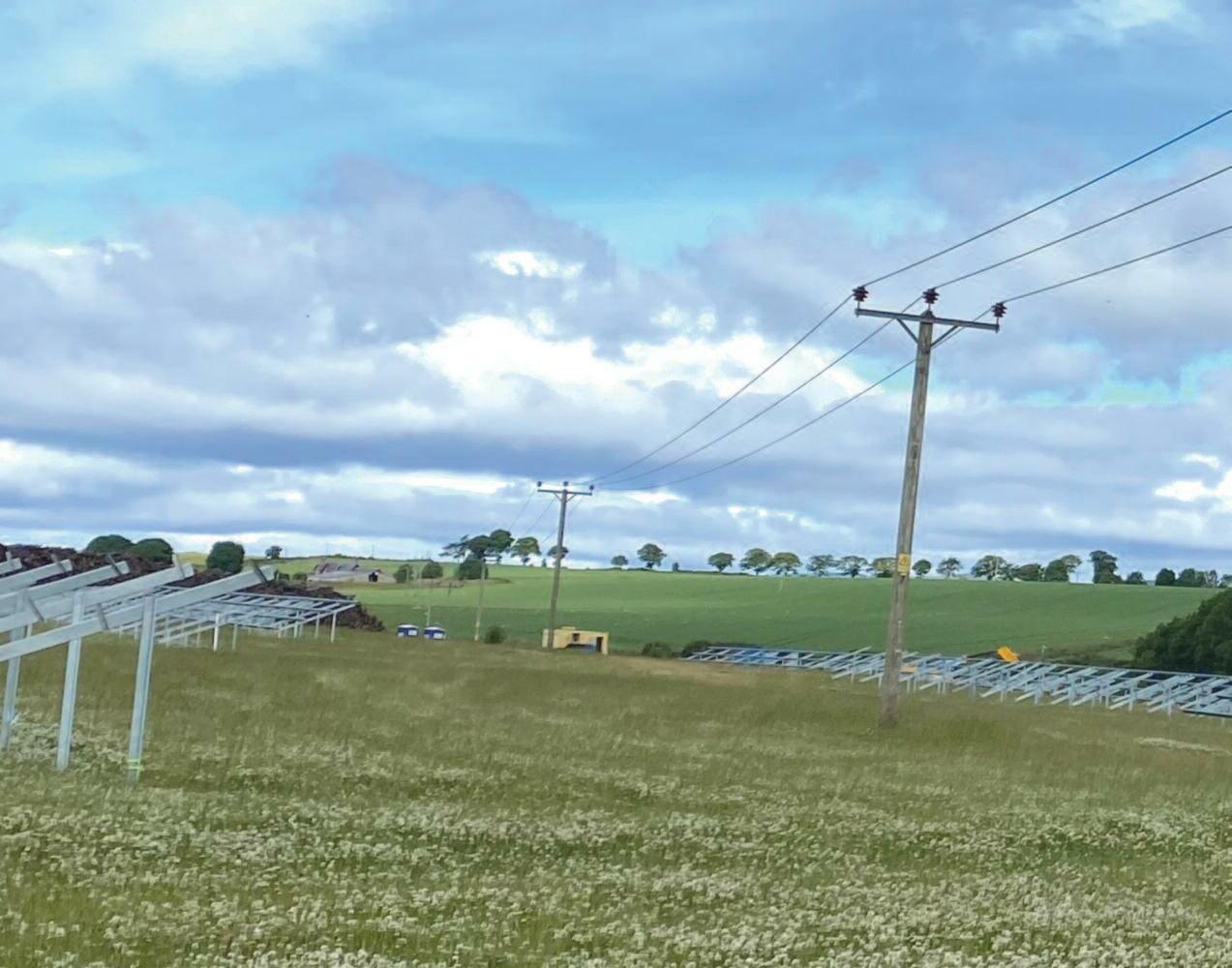
Compared to previous years, Galbraith has entered into more discussions about battery storage projects than ever before not only are we being approached and agreeing heads of terms for standalone battery projects, but we are also seeing energy storage being introduced into solar heads of terms as part of co located projects in which multiple renewable echnologies co exist to maximise and usage and grid capacity
philippa orr@galbraithgroup com

Pa g e 6 | Energy Matters | Winter 2022/23 | g a l b ra i t h g ro u p co m
07917 220779
Bright prospect: Demand for solar hits the roof in Scotland
Concerns over energy supply and technology improvements are driving demand for solar power in Scotland Richard Higgins reports
The closure of key power stations such as Longannet in Fife and Cockenzie in East Lothian has combined with price rises on imported fuel to threaten a possible energy crisis – current supplies may not be sufficient to support Scotland through the coming winter.
All this has highlighted more than previously the importance of renewable energy generation Scotland already produces a large amount of renewable energy, however only 3% of this is made up of solar energy When looking at a larger scale, this only constitutes 2 5% of the total UK solar energy generation
Despite this, the number of solar developments being promoted and consented in Scotland has been increasing In the past, solar energy was not very enticing to landowners and often sat in the shade of the wind sector However, solar's fast evolving technology and reducing prices, combined with higher demand for renewable energy, have seen more landowners being approached
Growing awareness that electricity producing photovoltaic solar panels work highly efficiently in Scotland has increased demand for local sites, while globally, the solar energy market is estimated to grow at a compound annual rate of
“
Globally, the solar energy market is estimated to grow at a compound annual rate of 13.78% from 2022 to 2031
13 78% from 2022 to 2031 as countries drive for net zero greenhouse gas emissions
Galbraith has been appointed to act on behalf a number of landowners who have been approached by developers looking into ground mounted solar PV arrays at all scales

The viability of any scheme will be subject to several considerations, perhaps the most critical being a suitable grid connection point
Planning is a key aspect too as well as the potential for use of the generated electricity by a local enterprise (including the landowner ’s other activities), which may lessen the requirement for a grid connection
negotiating the terms of any agreement for land or development is vital as the projects will be around for 30 years or more At Galbraith we are actively advising a range of landowners and developers in reaching the best outcome for all While net zero is an obvious driver for development, food security is a vital aspect too, and will be factored into the success of a scheme, given the need to protect good quality agricultural land
Emerging opportunities for vertical farming will have a substantial energy requirement and we shall comment further on this soon
richard higgins@galbraithgroup com 07717 581741
Ground mounted solar PV farm under construction

g a l b ra i t h g ro u p . co m | Energy Matters | Winter 2022/23 | Pa g e 7
Home heating: The task ahead is huge

Energy performance data highlight the challenges of making homes energy efficient Calum Innes reports
The Energy Performance Certificate (EPC) is much criticised for its inflexibility and overall usefulness; however, regardless of its shortcomings, it is the measure by which all buildings are judged
The Scottish Government provides data on all EPCs issued and, whilst it is important to be cautious in analysing this information, even a cursory review prompts some stark realisations
Firstly, all rented properties should achieve a minimum energy rating of ‘C’ (‘B’ for families in fuel poverty), as must owner occupied properties There are provisos about these requirements being technically feasible and cost effective but they remain unclear at present

The magnitude of what’s involved in making buildings energy efficient in the seven band system is highlighted by the fact that of approximately 55,000 EPCs undertaken in the 10 years since launch, 38% of properties assessed fall into bands below ‘C’
Fuel poverty is defined as occurring where a household spends more than 10% of its income on energy, making remaining income insufficient to maintain an adequate standard of living

Despite UK Government plans for a cap on costs in the face of extraordinary increases in electricity and fuel prices, fuel poverty is bound to impact an increasing proportion of households
The challenges involved in protecting the most vulnerable are highlighted by the fact that the most efficient homes those in categories ‘A’ and ‘B’ account for only some 17% of those included, the vast majority being new build properties
This brings into focus the failure by housing associations and others tasked with delivering affordable housing to achieve their targets Of course, the reasons for this are multi faceted and reflect a fall in approval levels, whether due to planning issues or the significant cost inflation, which has impacted all sectors, or a combination of both
In summary, it is clear that the condition of our housing stock is such that enormous investment will be required if t laudable aspirations of govern are to be met
A 1.26% B 15 93% C 44.58% D 26 17% E 8.63% F 2.67% G 0 75% Pag e 8 | Energy Matters | Winter 2022/23 | galbraithgroup.com
07909 978643 calum innes@galbraithgroup com
EPC DATA Scotland, Q1 2022 EPC DATA New build v existing properties 25,000 20,000 15,000 10,000 5,000 0 NewbuildExistingNewbuildExistingNewbuildExisting Existing Existing Existing Existing A
B C D E F G
A new lease of life for a former coal fired power station
A former coal-fired power station eight miles east of Edinburgh is emerging as a key renewable-energy site and focus of planned economic development and job creation.
East Lothian Council’s plans for the former Cockenzie power station include facilitating energy related infrastructure and power generation and providing a focus for wider industry and commerce
The site surrounds a strategically important grid substation with capacity for additional connections In 2019, Scottish ministers granted planning permission to red rock Power for an onshore substation at Cockenzie for Inch Cape Offshore Wind Farm, currently being developed off the Angus coast, to connect up to 1GW of generation to the grid
In 2021, Seagreen Wind Energy was granted an option over a similar sized area to connect up to 500 MW from the Seagreen Wind Farm, also located off the Angus coast Works are likely to begin on both sites in 2023
The council is working through planning for a public road through the site to open up further development opportunity, provide access for construction and relieve existing traffic flows between Cockenzie and Prestonpans The Blindwells housing development, being built a short distance southwest on a former opencast coal mine, will ultimately form a new town of up to 30,000 homes
On 5 September, the Energy Team at Galbraith, which has provided strategic advice to the council over a number of years, toured the 200 acre Cockenzie site, acquired by East Lothian Council in 2018 raymond Montgomery, the council’s Project Manager for Cockenzie, and Galbraith’s richard Higgins gave a presentation

Additional discussions are underway with battery
storage and renewable energy developers and with other enterprises spanning data storage, hydrogen and high tech industry Along with its unique location and infrastructure, Cockenzie offers a jetty and mooring ‘dolphin’ or array in the Forth, a direct rail connection to the East Coast Main Line and ready access to the A1
Making the most of such a complex site requires input from many parties, and local communities are very much involved in presenting ideas
Current proposals include a climate change centre, while a cruise terminal feasibility study is underway In a further measure to create the required infrastructure, the council has applied to the Levelling Up fund to help remove some of the large embankments surrounding the former coal store, using the material to raise the base level of the former power station buildings and iconic chimneys, demolished in 2015
Subject to funding, work on this could start in the next 12 to 18 months, opening up a significant development site of up to 30 acres Changes to the national Planning Policy Framework have helped advance a range of opportunities for the brownfield site to communities and the wider council and regional area
It is fascinating to be involved in the transition of a dirty, coal fired power station to a location for clean, renewable energy generation and bring forward wider opportunities to the next generation
7717 227404


galbraithgroup.com | Energy Matters | Winter 2022/23 | Pag e 9
Big changes planned for a former power station include making it a hub for two offshore windfarms Lauren Simpson and Oliver Vincent report
n simpson@galbraithgroup com
oliver vincent@galbraithgroup com 07540 723495
“ “
We now spend more on fuel for the lawnmower than we do for the car
Installing an EV charger at home to capture the power of the sun has been worth it, despite the pitfalls, writes John Pullen
As a renewables engineer and electric vehicle owner living on the relatively sunny Moray coast, I thought it seemed a logical step to attempt to charge our car free using solar panels

With rising utility bills, using mains electricity to charge the vehicle at home works out at around 7p/mile or between £500 £1,000/year This cost is set to increase as energy prices continue to climb
Although we already had 4kW of solar panels installed on our garage, the general loads of running the house often use the majority of this generation Even at full power it would take more than 12 hours to fully charge the car, far longer than the sun generally shines
We are fortunate to own a field adjacent to the house with a full, unobstructed view to the south the perfect location for a further array of solar panels After a brief check with the network provider SSEn, I found a further 12kW of panels could be added without any substantial or costly upgrades As they would be ground mounted, planning permission was required for the additional 42 panels
The panels were arranged to maximise the duration, rather than peak generation to give the longest possible window for charging the
vehicle while also running the remainder of the house, without having to import costly energy from the grid

Although the system works fantastically well, the route to this point has not been without its twists and turns We are on our second car after a failure of the original and our charger was incorrectly wired by the installer preventing it from working for months
The installation of the panels was also repeatedly delayed taking nearly a year from placing the original order
However, our location and property are ideally suited to the arrange ment I was also in a position to de sign the system and obtain the planning permission myself

It is yet to be seen if the system will ever pay itself back but we are now hopefully better protected against rising energy and transport costs On a sunny day, watching the flow of energy from the sun into the car makes the journey all worthwhile
We now spend more money on fuel for the lawnmower than we do r the car
john pullen@galbraithgroup com 07557 163140

Pa g e 10 | Energy Matters | Winter 2022/23 | g a l b ra i t h g ro u p co m
Above: The electric car charging from the original 4kW installation at John Pullen’s home
Right: On a sunny day, watching the flow of energy from the sun into the car makes the journey all worthwhile
Left: The car charger point

Below: The new array of solar panels is arranged to maximise the duration of charging

Demand for roadside energy sites on the rise

Solar PV developers are seeking land beside roads for green energy, storage and vehicle charging Richard Haggart reports on an EV revolution

The number of electric vehicles on Scotland roads is growing year on year, fuelling demand for charging stations, especially in the most rural of areas
The EV total is destined to rise as the UK Government is set on ending the sale of new petrol and diesel vehicles by 2030 Therefore a great deal of investment is required in rolling out charging stations, and the UK Government is putting £1 3 billion into this infrastructure
Experts say the greatest barrier to EV adoption is “range uncertainty” arising from perceived lack of charging points currently there are 1,800 public charge points across Scotland
Though not famed for its solar electricity generating capacity, Scotland has seen growing demand from solar developers for sites, according to research by Galbraith The main attraction is longer daylight hours compared to the south Solar photovoltaic the conversion of light into electricity using semiconductors works just as well in Scotland as in southern England
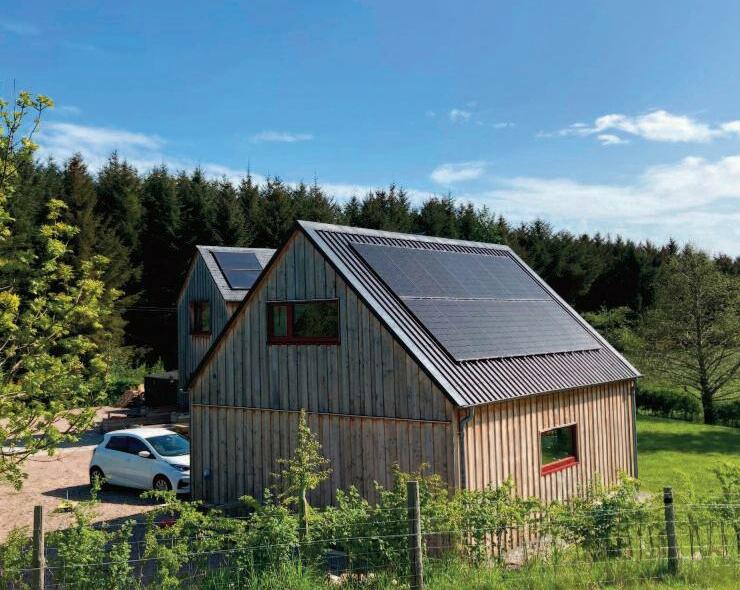
It makes economic sense to locate EV charging stations close to electricity generation as this minimises costs and the proportion of electricity lost in transmission Developers looking to link the two functions are seeking sites across Scotland to achieve this Further, land that also shows potential for energy storage can only add to the attraction, as battery know how steadily develops to address the intermittency problem associated with renewable energy technologies
Some developers are offering to buy land subject to freehold, or leases with a minimum 25 years The highest demand is for locations that already boast facilities such as a cafés, offices or shops and are close to existing road networks
The installation of a solar development with charging points could generate a higher footfall on such sites as EV users tend to plan their routes around charging stations
If a solar development with adjacent charging facilities is of interest to you, please contact our in house experts who can contribute to every aspect of planning design, management and implementation of all types of solar developments or EV charging from estate scale to full commercial installations 07717 835207
g a l b ra i t h g ro u p . co m | Energy Matters | Winter 2022/23 | Pa g e 11
richard
haggart@galbraithgroup com
Joined-up thinking: Getting offshore links up to speed
Plans to reshape the infrastructure supporting offshore wind generation and transmission are well under way Richard Higgins reports
Energy regulators are moving ahead with plans to revamp Britain’s electricity grid to remove costly and environmentally damaging barriers to the growth of offshore wind generation

Ofgem launched the Offshore Transmission network review (OTnr) In July 2020 to “deliver better co ordination of offshore transmission and interconnection” Subsequent events have afforded the programme a higher priority than previously
The UK’s ambitious target of producing 40GW of power from offshore wind by
2030 was increased to 50GW by the Prime Minister in April 2022 as part of the British Energy Security Strategy announcement
The national objective of achieving net zero greenhouse gas emissions by 2050 made clear that the current commercial and regulatory regimes were hampering the ability of developers to progress their projects quickly enough, at costs that would not be prohibitive
Currently, each offshore wind project is connected to the grid onshore via its own transmission connection and the lack of coordination offshore and
Pa g e 12 | Energy Matters | Winter 2022/23 | g a l b ra i t h g ro u p co m
onshore between projects has hindered the speed of development
The consultation continues, and Ofgem has published updates on a number of areas setting out the potential frame work for multiple points of interconnec tion (MPI) and the regulatory framework changes necessary (see chart)
In short, the current legislative framework and regulation preclude different projects from sharing transmission assets, leading to multiple and expensive onshore links, substations and connection points to the grid This in turn has environmental impacts both on and offshore, the greater disruption being onshore as the extra planning and environmental consenting required adds to development timescales, commercial risk and cost
The review has sought input from industry and beyond and it is expected that further information will emerge in coming months and years The potential is to create an effective transmission network offshore, with strategic links to the South initially
Changes envisaged are likely to involve significant complexity and some core decisions Most windfarms generate electricity in alternative current that is then exported to the grid through project substations
Collecting electricity from multiple windfarms offshore would enable the scaling up of projects and potentially the use of direct current transmission, which is more efficient over distance and involves reduced energy loss and less cabling
Converter stations may be required at
each end to turn AC generated power into DC and then back again for onshore transmission the economics of efficiency of transmission in DC need to be balanced with the costs of conversion and the potential future structure of this offshore grid
The map on page 22 shows the scale of the industry and the geographical, environmental and political structures
It is a large undertaking that requires engineering solutions, financial considerations, regulation and legislation quite a handful of challenges
richard higgins@galbraithgroup com 07717 581741

The objective and regulatory scope of the four OTNR workstreams
Early opportunities
Objective: Identify and facilitate opportunities for increased coordination in the near term; focused on in flight projects
Regulatory scope: Current legal framework including secondary legislation Changes to primary legislation out of scope
Pathway to 2030
Objective: Drive coordination of offshore projects progressing through current Scotwind and Crown Estate Leasing round 4, connecting before 2030

sRegulatory scope: Current legal framework including secondary legislation Changes to primary legislation potentially in scope if required for optimum framework
Enduring regime
Objective: Develop a new post 2030 framework that drives coordination from the earliest stages of an offshore project Changes must be driven across multiple government departments, eg planning
sRegulatory scope: Changes up to and including primary legislation
Multi-purpose interconnectors
Objective: Make tactical changes to facilitate early opportunity MPI Develop and enduring MPI regime for 2030 onwards
sRegulatory scope: Current legal framework for early opportunity MPIs; changes up to and including primary legislation for any potential enduring MPI regime
g a l b ra i t h g ro u p . co m | Energy Matters | Winter 2022/23 | Pa g e 13
Keeping energy costs down on the farm
The energy crisis is nowhere more significant than in agriculture, especially food production Mike Reid looks at what farmers can do
Energy usage and cost is a huge issue for homes, businesses everyone but sometimes forgotten is the role of farmers in conserving resources and limiting carbon emissions.
now, price rises mean there’s little chance of farmers themselves forgetting UK businesses are on track to pay four times the electricity price they did in 2020 according to the consultancy Cornwall Insight, and agricultural won’t escape the trend
Farming is the UK’s eighth biggest energy consumer by industry sector, using 2 79m tonnes of oil equivalent in 2015 One farm in Essex is threatening to close at a cost of 130 jobs lost without Government support after calculating its natural gas bill would rise from £900,000 to £14 6m, nearly triple its expected sales
Any farmers unused to frugality will be reviewing their approach and looking for ways to reduce outgoings in the face of big price rises resulting from the supply chain problems that stem from the war in Ukraine
An ‘Energy Price Guarantee’ announced by the UK Government on 8 September means a typical household will pay up to an average £2,500 a year for the next
two years, saving £1,000 or more a year, based on current prices
On 21 September the Government announced a six month support package effectively halving energy prices for businesses including farms and rural enterprises, plus charities, schools and public bodies Suppliers will reduce bills in pence per kilowatt hour for qualifying non domestic customers and be reimbursed by the Government for the reduction in wholesale gas and electricity prices passed on
Still, there are concerns about both the effectiveness of these measures, considering the strength of the cost of living crisis, and the cost to taxpayers estimated by the Business Minister Jacob rees Mogg as likely to be in the tens of billions of pounds
Alternative energy sources such as solar PV and wind as a replacement for fossil fuel derived electricity are seeing big take up due to concerns over greenhouse gas emissions plus rising utility prices and potential interruption to supply
Solar panels work in direct sunlight but also create electricity on cloudy days
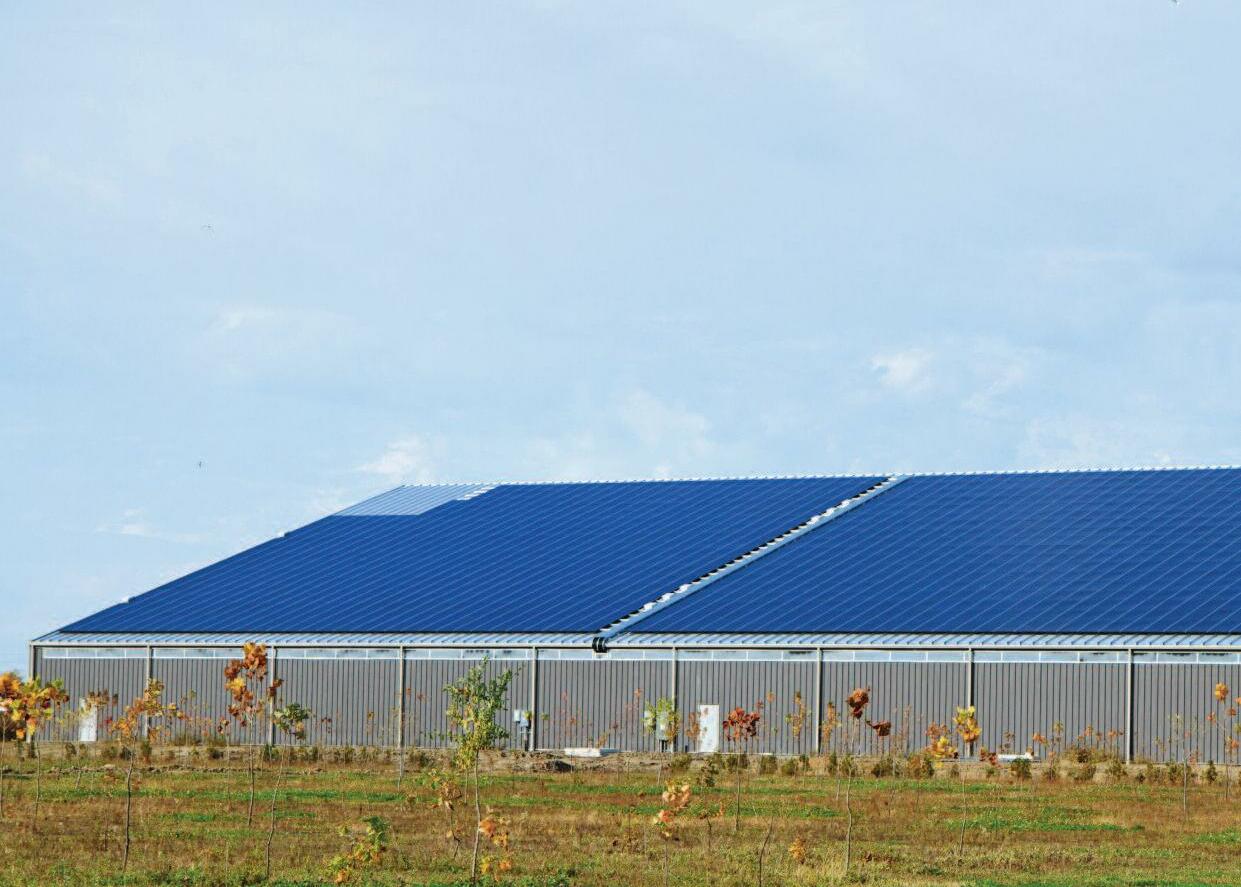
natural light can be converted to electricity on farm buildings to power lighting, cooling and machinery such as milking systems, though care should be taken to ensure sufficient equipment quality to withstand chemical incursion, for example from ammonia on chicken sheds
Progress in technology has made solar panels cheaper, and any excess power generated can be sold back into the grid, though at limited prices
That said, perhaps the most effective protection from rising prices is offered by improving the energy efficiency of existing buildings, equipment and processes
Storing potatoes is among the most energy intensive activities, and while electricity costs tend to be higher for the fresh market sector, due to refrigeration requirements, than for processing, much can be done to improve operational efficiency from the moment a crop comes into store Farmers Weekly has a handy guide, suggesting sealing gaps, minimising airflow and considering better equipment

Pag e 14 | Energy Matters | Winter 2022/23 | galbraithgroup.com
One benefit of increased energy costs is that it has focused attention on how to use less energy, create power from renewable sources and make processes more efficient.
“
Above: Potato storage uses a lot of energy.

Below: Solar panels on a barn roof

Arable farmers too should consider ways to boost energy efficiency

Cooling crops rather than drying them could save 10% in like for like comparisons of energy costs, according to Farm Carbon Toolkit
As the Carbon Trust notes in its 2019 Energy efficiency in agriculture guide, “reducing energy use makes perfect business sense; it saves money, enhances reputation and helps everyone in the fight against climate change ”
One benefit of increased energy costs is that it has focused attention on how to use less energy, create power from renewable sources and e processes more cient ke reid@galbraithgroup com 07909 978642
Mobile operators try to reduce future liability

Mobile operators are seeking to strengthen their hand in negotiating telecommunication leases by limiting landlords’ compensation rights Mike Reid reports
Mobile phone operators are trying to reduce their liability to landowners for any future losses or damage as a result of rights granted to them under Code agreements.
Phone companies rely on property owners throughout the UK many of them farmers to provide space for the telecommunication masts and associated equipment vital for the proper running of networks
Provisions in the Electronic Communications Code, introduced in December 2017, are designed to protect landlords against any future loss or damage caused by mobile phone companies under agreements negotiated at the start or on renewal of a lease
Landlords should be entitled to compensation for any losses arising from the terms of an agreement either reached consensually or imposed by a Tribunal However, the Code only provides full compensation rights if the agreement is imposed by the Tribunal
Some operators have sought to water down their potential liability by excluding such clauses altogether from agreements, while others are seeking to limit their liability to any loss or damage that might not have been reasonably anticipated when the lease was agreed
It isn’t possible for all future losses to be included in a site payment as the landowner will have no idea what damage or losses might be incurred in the future
Limiting liability in this way could encourage an operator to claim any loss was foreseeable, removing any right to claim
At the time of writing, the Product Security and Telecommunications Infrastructure Bill is working its way through Parliament This Bill will give more powers to the mobile phone operators and the Government has stated its intention to close the “loopholes” in the original Code
This is one loophole we consider should be closed, as mobile operators are trying to take commercial advantage of a Code provision that was included to protect property rights
We have been in consultation with the Department of Culture, Media and Sport
galbraithgroup.com
to seek a change in the law to make the compensation provisions of the Code mandatory
DCMS confirmed to us it has consistently made its position clear on the issue of compensation in that a landlord should receive compensation to cover out of pocket expenses “such as fees” and any existing or future loss and damage irrespective of whether an agreement is reached consensually or imposed by a court
This position was reaffirmed in the debate during the committee stage of the PSTI Bill in the House of Lords where Lord Sharpe said on behalf of the Government: “It was always the policy intention that the compensation provisions in the Code should inform consensual negotiations for compensation ”
The Government needs to do more than
just say these are its intentions and actually change the law to ensure these provisions are legally binding
There are significant implications for landlords who omit to reserve the ability to claim future compensation for costs or losses These could include agricultural losses for crops and livestock due to damage caused by taking access or breaking drains
Alternatively, the telecommunication equipment may prevent an owner from installing rooftop solar panels, which they may require in order to comply with EPC regulations, thus incurring considerable costs, including potential fines, particularly in England
Landlords should seek specialist advice ahead of telecommunication negotiations in order to protect their rights, including the right to claim future compensation
Helpfully, recent Tribunal decisions have confirmed that all the landlord’s reasonable fees should be paid by the mobile operators for some Code agreements, so the cost of advice should not be borne by the landlord
| Energy Matters | Winter 2022/23 | Pag e 15
There are significant implications for landlords who omit to reserve the ability to claim future compensation
“
mike reid@galbraithgroup com 07909 978642
Comfort zone: Our new home has energy efficiency built in
Building a house fit for the 21st Century has left Calum Innes expecting better energy efficiency Time will tell how well it works
Most people are looking at the cost of heating their homes and wondering what can be done to reduce their energy use
Making significant energy saving improvements to an existing property is generally a complicated undertaking to ensure there are no unexpected consequences; however, when building a new property, the opportunities are boundless, albeit not without cost implications


We recently embarked upon a project to build a new house in a challenging location 1,500 feet above sea level and decided to try and make the most of the opportunity in terms of energy efficiency Of course, building regulations impose certain minimum standards but we wanted to try and improve upon these threshold levels
U Value the measure of the overall rate of heat transfer is a hugely complicated calculation but from a simple perspective, the lower the value the better Current standards require a minimum U Value for walls to be 0 17 W/m2K However, we opted for 0 12 W/m2K, the Passivhaus standard, on the basis that it is easier to do at the construction stage than regret it after the event
For the principal heating system, we chose an air source heat pump with distribution via underfloor heating, and a woodburning stove as a secondary source we are unsure how much it will be required but at least it will work in the event of a power outage and, as the house is at the end of the distribution network, this could happen
Much more efficient than central heating, ASHPs extract heat from external air for circulation inside the pump uses electricity but considerably less than would be required to heat the air so there’s a big carbon benefit
In addition there is a mechanical ventilation and heat recovery system to circulate air within what is a very airtight space with fresh air coming into the building heated by the air being exhausted to minimise heat loss
For power there is about 5kW of solar PV panels on the roof to generate electricity, with a Tesla Powerwall battery to store power if there is no immediate demand Finally, we have opted to have a three phase mains electricity supply to allow a fast car charger to be installed
Of course, the proof of these measures will be in using the building as our home Will living in the house live up to our expectations or will we be cu the complexities of technolog Time will tell
Pa g e 16 | Energy Matters | Winter 2022/23 | g a l b ra i t h g ro u p co m
07909 978643 calum innes@galbraithgroup com



g a l b ra i t h g ro u p . co m | Energy Matters | Winter 2022/23 | Pa g e 17
The air source heat pump, underfloor heating being installed and rooftop PV panels for generating electricity
Key points to agree before the diggers arrive
It is wise to be prepared when a utility provider seeks to undertake works on or near your property, says Callum Woods

When approached by a third party who intends to install a water main (or other underground or over ground apparatus for that matter) on your property there are a number of points you must ensure are addressed before works proceed
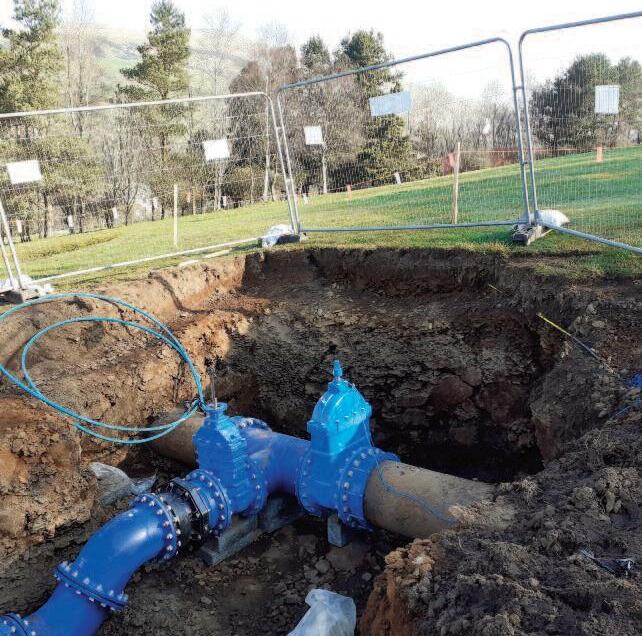
If approached by a utility provider such as Scottish Water (SW) the apparatus will be installed under notice or acquisition, whereas if you are approached by a developer the apparatus will either be installed under a servitude or by Designated Authority (DA) given to the developer by SW
DA permits the developer to install the apparatus under notice, with SW then adopting the installation and bringing it under their responsibility as part of the national infrastructure If the apparatus is not being installed by SW or under DA, a landowner will want to agree a monetary payment from the third party which will consider the amount of apparatus, likely disturbance caused, benefit to the other party and the availability of alternative routes
Utility providers such as SSE or Scottish Power install their apparatus under wayleaves or servitudes, for which payments are made to the landowner based on their set utility rates
First and foremost you have the right to be represented by a land agent with your reasonable fees being the responsibility of the third party If you are dealing with a developer or individual it is prudent to have these fees confirmed in a legally binding fee undertaking before progressing
Once fees are confirmed you may have a preferred route to that which has been proposed, and if this does not constitute a large change to the work required or cost, can often be agreed We recently had a client where a water main was installed on the opposite side of a farm road to that proposed in order to avoid an existing field drain
Timings and working areas need to be confirmed and we find that contractors usually underestimate the size of area they require to carry out the works It is beneficial to agree a sufficient working area to allow for top and sub soils to be piled up separately, the excavations themselves and actual space required for machines to undertake the work
Once agreed, ensure that the contractors are fenced in to prevent them straying from the area Timings need to be known so the relevant people can be informed; for example, you may have a let
cottage on the farm where the tenant’s access will be affected by the works If the works continue outwith SW’s notice period there will be additional payments due to the landowner which can be agreed on a rate per week basis before works commence
The works may well be in the area of existing field drains and we recommend that pre scheme drainage works are undertaken to ensure the drains are tied up and can continue to run while works are ongoing Chances are you have a preferred drainage contractor and again we would recommend that you have this person undertake the works; it is often field drains that have either been broken or reinstated incorrectly that cause subsequent issues These drains can then be reinstated by your contractor before excavations are backfilled
After the works are complete and a final walk over has taken place, a compensation claim will likely be required to include landowner ’s time it is wise to keep a diary from initial point of contact, damage caused by the works and loss of grazing/crops and agent’s fees, among others
Depending on the location and disturbance caused this could be a full and final claim or subsequent claims may be required over the next few years
These are the key points to consider but there are others, such as agreeing a licence and fee for road closures if alternative access is required over your property or agreeing a compound licence and fee for the contractor ’s storage/welfare area plus a multitude of site specific points that may need addressing
Please do get in touch if you are approached in regard to a similar matter and we will be delighted to help
Pag e 18 | Energy Matters | Winter 2022/23 | galbraithgroup.com
callum woods@galbraithgroup com 07824 142069
Ensure that the contractors are fenced in to prevent them straying from the area.
“
Hydrogen: A long road ahead for a potential source of clean energy

Where is the water source and where will the surplus water be discharged?
What are the implications of abstracting groundwater or storing sufficient surface water for hydrogen production?
As reported in Energy Matters Issue 24, renewable hydrogen should play a significant role in powering our future, but there are still many obstacles to overcome before it is an everyday fuel Electricity can be converted into hydrogen by electrolysis The hydrogen can be stored and then used for various purposes such as heating or transport, or potentially converted back into electricity
However, the ‘round trip’ efficiency involved is lower than other storage technologies, making this option unattractive at the moment Hydrogen can be re electrified in fuel cells with efficiencies of up to 50%, that is, retaining half its energy, or burned in combined cycle gas power plants, with efficiencies as high as 60%
For regular vehicles there are technical challenges of how to store the amount
What are the implications of the chemical composition and temperature of the surplus water being discharged?
Hydrogen storage and transportation frequency can also cause concerns over potential impacts on the landowner ’s property and the wider community
There is also the challenge of the commercial returns for each party, which are always difficult to assess correctly in an emerging market, but
appropriate returns can be agreed Proper planning for and consideration of all these issues is essential for any scheme, and agreeing robust provisions is critically important for a development that could last for more than 30 years renewable hydrogen will almost certainly become part of the renewable power mix, but there are many challenges along the way before ecomes an economically ble fuel
of hydrogen required for a conventional driving range (less than 300 miles) within current constraints The weight and volume of hydrogen storage systems are presently too high to produce adequate distances compared to petrol or diesel vehicles
Energy efficiency is a challenge for hydrogen storage refuelling times are too long and the costs too high However, despite all these challenges the development of hydrogen has potential
We are receiving numerous approaches by developers to include potential hydrogen production in proposed onshore wind farms and solar developments
It is important for landowners to assess the implications of a hydrogen production plant on their land, including visual amenity considerations and environmental impact

Hydrogen will play a key role in future energy, reports Mike Reid Meanwhile, production has its challenges
Energy efficiency is a challenge for hydrogen storage refuelling times are too long and the costs too high.
“
galbraithgroup.com | Energy Matters | Winter 2022/23 | Pag e 19
mike reid@galbraithgroup com 07909 978642
The heat pump that defrosts itself
Glasgow academics have made a key environmental technology even more efficient Now they’re looking for partners Calum Innes reports
Researchers are seeking to partner with manufacturers to bring to the market a technology that makes heat pumps more efficient
Air source heat pumps reduce greenhouse gas emissions from buildings as they use significantly less energy than traditional heaters such as boilers The externally mounted units extract heat from outside air for use indoors, rather like a refrigerator extracts heat from inside However, take up by UK householders has been limited, despite grants of £5,000 being available to households to instal ASHPs under the UK Government’s Boiler Upgrade Scheme
researchers from the University of Glasgow say the flexible heat pump technology they’ve developed could increase their appeal to households, saving on their energy bills and contributing towards net zero emission goals
ASHPs struggle to perform when outside below 6°C, when ice starts to build up on outdoor units, affecting their ability to heat indoors Current designs defrost the units by using additional power to draw thermal energy back out from the building, interrupting the heating process indoors during the process and reducing the systems’ overall energy efficiency
The Glasgow team has designed a more flexible heat pump that defrosts itself during colder weather while providing heat indoors It will also be capable of switching modes to benefit from

off peak electricity or draw in warm air during the daytime Zhibin Yu, of the University of Glasgow’s James Watt School of Engineering, said: “To reach net zero emissions by 2050, we’ll need to radically overhaul the way in which we heat our homes and businesses Air source heat pumps, powered by renewable sources of electricity, have a great deal of potential to help the UK decarbonise the way we heat indoor spaces ”
Professor Yu and his team are ing collaborators to progress elopment of the technology

978643
com
University of Glasgow Professor Zhibin Yu with the flexible heat pump that defrosts itself during colder weather while still providing heat indoors

Pag e 20 | Energy Matters | Wi n te r 2 02 2 /2 3 | galbraithgroup.com
07909
calum innes@galbraithgroup
Pedal power: cycle route aims to give coastal businesses a lift
A number of recent and ongoing cycle path projects throughout the country aim to link communities and provide greater connectivity whilst at the same time creating economic benefits for local businesses
It has been shown that active travel can bring enormous benefit to people’s wellbeing and the environment Cycle paths are designed so people of all ages and abilities can enjoy themselves cycling, walking and wheeling travelling by wheelchair
Galbraith has been involved in a number of cycle path projects, liaising with land owners and advising on and assisting with the method of acquisition, often through a long term lease or purchase At the time of writing we are assisting with the East neuk 50 (En50) project in coastal Fife

named ‘destination’ routes have become popular in recent years and perhaps the most widely known route is the north Coast 500
The En50 differs in terms of length, landscape, and road use It is also a lot more accessible It starts and ends at the railway stations in Kirkcaldy and Dundee and the intention is for the path to be away from the road for most of the route
The project seeks to develop sustainable cycle tourism, but it is not designed as a leisure
initiative but rather as a local economic initiative focused on helping business to become more sustainable It will use existing routes to get customers to tourist focused businesses in a more sustainable manner There is significant opportunity for subsidiary benefits such as active travel to the communities on the route
The project is funded by the Scottish Government through Transport Scotland’s Places for Everyone and is administered by Sustrans, the custodian of the UK national Cycle network, which over the past 12 months has been involved in the creation of 203 miles of walking and cycling routes, delivered in conjunction with its partners
In an online survey last year, 92% among 540 responses backed its creation, with 91% saying they would use it The distances between villages in the East neuk mean people could comfortably cycle or wheel but at present there are no safe shared routes
The East neuk is already a popular tourist destination and with the completion of the route local businesses will no doubt benefit for years to come

g a l b ra i t h g ro u p . co m | Energy Matters | Winter 2022/23 | Pa g e 21
callum woods@galbraithgroup com 07824 142069
Cycle paths bring economic as well as environmental and leisure benefits Callum Woods reports
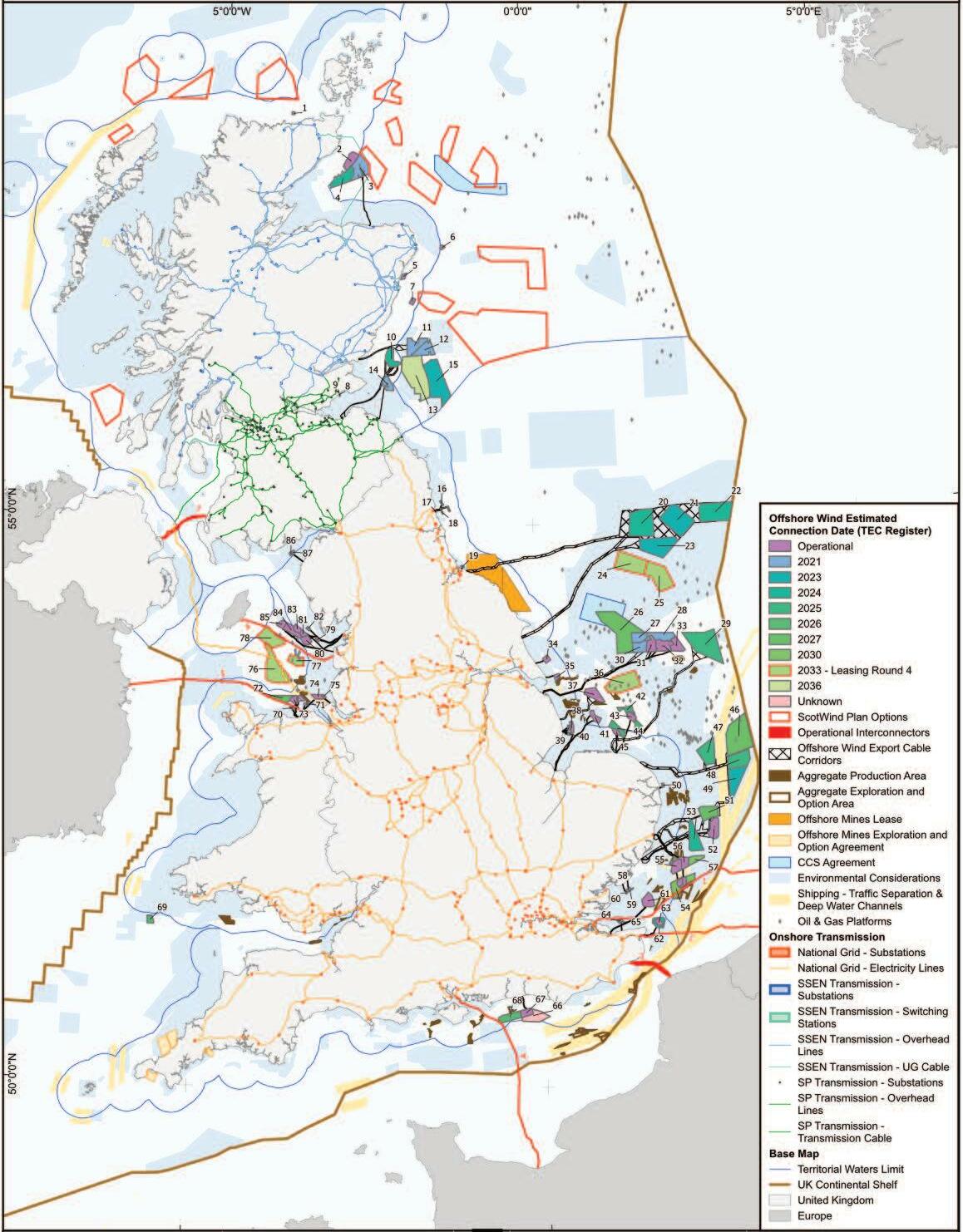
OFFSHORE TRANSMiSSiON NETWORk REviEW GENERATiON MAP See story on page 12 Pag e 22 | Energy Matters | Winter 2022/23 | galbraithgroup.com
Gaoithe
Sheringham Shoal
Norfolk Boreas
Norfolk Vanguard West
Norfolk Vanguard East
East Anglia Three
Scroby Sands
East Anglia One North
East Anglia One
East Anglia Two
Greater Gabbard Extension
Greater Gabbard
Galloper
Estuaries
Sands I
Sands II
Sands Demo
London Array
Thanet Extension
Thanet
Kentish Flats
Kentish Flats Extension
Rampion (Southern Array)
Rampion
Rampion Extension
Erebus
Rhyl Flats
North Hoyle
Awel y Mor
Gwynt y Mor
Burbo Bank Extension
Burbo Bank
Round 4 Preferred Project
Round 4 Preferred Project
Round 4 Preferred Project
Barrow
West of Duddon
Walney
Ormonde
Walney
Walney Extension
Extension
Robin Rigg West
Robin Rigg
INTERCONNECTORS
Britned Electricity Cable
Channel Link (Folkestone)
West Interconnector
Of Man Interconnector
Interconnector
RENEWABLE
The Domestic and non Domestic renewable Heat Incentives are closed to new applicants as of March 31, 2022 If you are already on the scheme, you will receive payments as usual as long as you continue to meet your ongoing obligations
The Government is still providing financial support to help with the rollout of low carbon heat technologies
Scotland
Home Energy Scotland Loan: This is designed to make homes warmer and more comfortable by helping homeowners to install energy saving measures through an interest free loan funded by the Scottish Government
Each household can apply for up to two home renewables systems per home up to £17,500, plus an energy storage system up to a maximum of £6,000
The maximum loan amounts are as follows:
• Wind or hydro turbines: £2,500
• Solar photovoltaic (PV): £5,000
• Solar water heating systems: £5,000 (£1,250 loan plus up to £3,750 cashback)
• Energy storage systems (heat or electric batteries): £6,000
• Hybrid PV solar water heating systems: £7,500
• Heat pumps (either air source to water, ground source to water, water source to water or hybrid air
source to water): £10,000 (£2,500 loan plus up to £7,500 cashback)
• Heat meter (if installed alongside a heat pump): up to £500 cashback
• Biomass boilers or stoves (non automated, non pellet stoves or room heaters are not eligible): £10,000 (£2,500 loan plus up to £7,500 cashback)
• Connections to a renewably powered district heating scheme: £5,000 (£1,250 loan plus up to £3,750 cashback)
Source: www homeenergyscotland org /find funding grants and loans/interest free loans/overv iew/
England
The Boiler Upgrade Scheme: The Boiler Upgrade Scheme (BUS) is a UK Government initiative to encourage more people in England and Wales to install low carbon heating systems
The BUS covers three low carbon heating systems:
• Air Source Heat Pump: £5,000 off cost and installation
• Biomass Boiler: £5,000 off cost and installation for properties in rural location and properties not connected to the gas grid
• Ground Source Heat Pump: £6,000 off cost and installation
Source: https://energysavingtrust org u k/grants and loans/boiler upgrade scheme/
Follow u s o n Twitter : @ Galbraith_Group
J o i n u s o n LinkedIn: w ww.linkedin.com/company/galbraith

Like u s o n Facebook : f acebook.com/GalbraithPr o p ertyConsultancy

Se e u s o n Inst a g ram: w w w.instagram.com/GalbraithGroup

WIND FARMS 1 Wind T&D Site 2 Beatrice Offshore Wind Farm 3 Moray Offshore Windfarm (East) 4 Z1 WDA 5 Aberdeen Offshore W/F 6 Buchan Deep Demo 7 Kincardine 8 Methil Demo 9 2B Energy Methil Demonstration 10 Inch Cape Offshore Wind Farm 11 Seagreen Alpha Project Z2 Firth of Forth 12 Seagreen Bravo Project Z2 Firth of Forth 13 Seagreen Delta Project Z2 Firth of Forth 14 Neart Na
Offshore Wind 15 Seagreen Charlie Project Z2 Firth of Forth 16 Blyth Demonstration Site 17 Blyth 18 Blyth Demo Phase 1 19 Teesside 20 Dogger Bank B 21 Sofia 22 Dogger Bank C 23 Dogger Bank A 24 Round 4 Preferred Project 1 25 Round 4 Preferred Project 2 26 Hornsea Project Four (HOW04) 27 Hornsea Project 2 Phase 2 (Soundmark) 28 Hornsea Project 2 Phase 1 (Breesea) 29 Hornsea Project Three (HOW03) 30 Hornsea Project 2 Phase 3 (Sonningmay) 31 Hornsea 1 (West) 32 Hornsea 1 (Centre) 33 Hornsea 1 (East) 34 Westermost Rough 35 Humber Gateway 36 Round 4 Preferred Project 3 37 Triton Knoll 38 Lincs 39 Inner Dowsing 40 Lynn 41 Race Bank 42 Dudgeon Extension 43 Dudgeon 44 Sheringham Shoal Extension 45
46
47
48
49
50
51
52
53
54
55
56
57 Five
58 Gunfleet
59 Gunfleet
60 Gunfleet
61
62
63
64
65
66
67
68
69
70
71
72
73
74
75
76
4 77
5 78
6 79
80
Sands 81
1 82
83
2 84
4 85 Walney
3 86
87
East
1
2 NEMO 3 Cross
4 IFA 2 5 East
6 Isle
7 Moyle
key galbraithgroup.com | Energy Matters | Winter 2022/23 | Pag e 23
ENERGY SUBSiDiES
ENERGY TEAM combines years of unrivalled skill in all property aspects of energy, utility and infrastructure. On the move and from our 13 offices across Scotland and the North of England, we bring wide experience of renewable energy technologies and associated services. We’re w you, no matter what the circumstances.
OUR EXPERTS
Battery Storage
Mike reid, Philippa Orr, richard Higgins
Biomass Mike reid
Buying, Selling & Due Diligence














Calum Innes, Mike reid
Carbon Capture & investment
Heather Coyle, Eleanor Harris, Athole McKillop
Compensation Claims
richard Higgins, Mike reid, rachel russell, Oliver Vincent
Compulsory Purchase Schemes (all infrastructure) richard Higgins, Mike reid, Colin Stewart
Feasibility Studies (renewables)
John Pullen
GiS & Mapping Strath Slater, Brogan Cutter
Hydro Power Dougal Lindsay, John Pullen infrastructure, Utilities & Wayleaves Callum Woods, Mike reid, Oliver Vincent, Philippa Orr, rachel russell investment (infrastructure & renewables)
Calum Innes, Crawford Mackay, Mike reid
Land Referencing
Philippa Orr, rachel russell Minerals
Peter Combe
Planning
Calum Innes, nicola MacGruer
Project Management (renewables)
John Pullen
On-shore Wind Harry Lukas, Crawford Mackay, Mike reid, Hugo remnant
Off-shore Wind richard Higgins




Mike reid, Philippa Orr, richard Higgins
Mike reid, Callum
Higgins, Calum Innes, Mike
GALBRAiTH’S
Solar
Telecoms
Woods Rating Calum Innes valuation richard
reid athole mckillop@galbraithgroup com 07718 523045 brogan.cutter@galbraithgroup.com 07500 794928 callum.woods@galbraithgroup.com 07824 142069 calum.innes@galbraithgroup.com 07909 978643 colin.stewart@galbraithgroup.com 07711 534794 crawford mackay@galbraithgroup com 07909 978641 dougal lindsay@galbraithgroup com 07899 997915 eleanor harris@galbraithgroup com 07585 900870 harry lukas@galbraithgroup com 07721 754822 heather coyle@galbraithgroup com 07825 382084 hugo remnant@galbraithgroup com 07718 523051 john.pullen@galbraithgroup.com 07557 163140 mike.reid@galbraithgroup.com 07909 978642 nicola.macgruer@galbraithgroup.com 07899 914865 oliver.vincent@galbraithgroup.com 07540 723495 peter combe@galbraithgroup com 07718 523034 philippa orr@galbraithgroup com 07917 220779 rachel russell@galbraithgroup com 07884 657219 richard higgins@galbraithgroup com 07717 581741 strath slater@galbraithgroup com 07917 327738 Elgin Inverness Perth Cupar Stirling Edinburgh Kelso Castle Douglas Aberdeen Hexham Blagdon Penrith Ayr Galashiels Stranraer Argyll Oban Galbraith offices Regional agents CONTACT US



























































